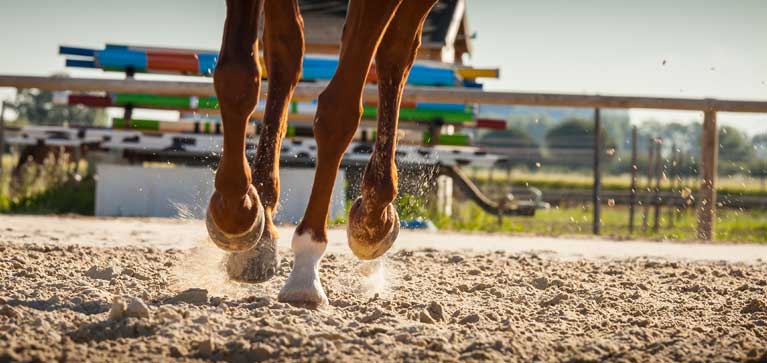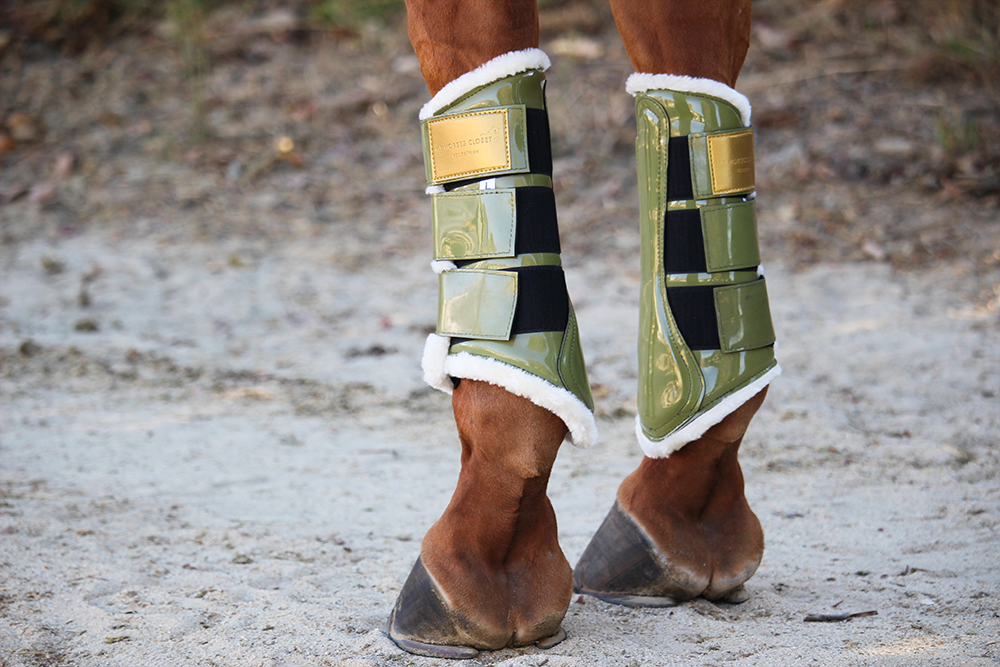The desire of all of us riders is for our horse to be healthy and happy. In order to stay in good physical condition, we have to know how to equip our fur buddies well enough. Putting protections on our horse is one of the basics.
Why do we need to protect the horse's legs?
During equestrian competitions, schooling sessions or trials, horses are often seen wearing protections.
Some only have them on the forelegs, others on the forelegs and hindquarters.
The reason for this equipment is very simple: to protect the legs of the horse during the various sports disciplines practiced.
Most riders are wrong that protections/boots should only protect horses from being hit on the obstacle pole. The truth is, the main role of this equipment is to protect your companion ... from injuring itself.
It is not uncommon for a horse to injure itself, in competition or during everyday work, by injuring its legs. In general, the horse always injures itself in the same area: for example by hitting his left anterior cannon with his left posterior hoof/shoe. Therefore, the leg protections have an essential protective role.
Which horse should wear protections?
Almost all horses have to wear protections of some sort at least once in their life.
Here are the most targeted profiles:
- Horses with Shoes (ie the vast majority of mounted equines) must wear protections as a general rule of thumbs. Indeed, the injuries horses can make will be much more painful because of the irons and nails. Whether in show jumping, eventing or dressage, think about protecting your horse.
- Horses with bad legs and conformation issues. Many horses have defects in their feet or gait that are difficult to correct. Due to morphological problems or bad habits acquired, they can damage their legs. To check if this is the case, walk alongside your companion and analyze the way he moves with the help of a knowledgeable horse friend. You should also always look and touch his legs (tendons, joints, foot) after a working session, to see if your horse gets small injuries or hits itself in the same area. In this case, wearing leg protections should be systematic.

- Show horses. Competition horses are at the greater risk of injury during the show season. First of all, because they do a lot of transportation and are likely to hurt themselves in the trailer. Then, because the shows push them to surpass themselves and push their limits. Even if your horse seems to enjoy going to a show, remember that it is a source of stress and excitement, inevitably resulting in a higher risk of leg injury.

How to select the right protection?
There are many protections for the legs of your horse, but not all have the same role.
- The Fetlock boots are placed, as the name suggests, on the horse's fetlock. They only protect the hindquarters.
- The Bells help reduce the risk of damage to the foot (crown, heel bulbs and pastern). They are usually placed on the front legs. Sometimes they can also be placed on all four legs.
- The work wraps, or polo bands, rather have a role of "supporting" the tendons. They mitigate light impact, but are not the best protection against injury.
- The Boots, they are placed on the front legs or on the four legs. The boots really act as a shield against small damage and external impact. They must be adapted to the morphology of your horse to be effective. They should not slide, turn, move nor be too tight.
SHOP BOOTS


